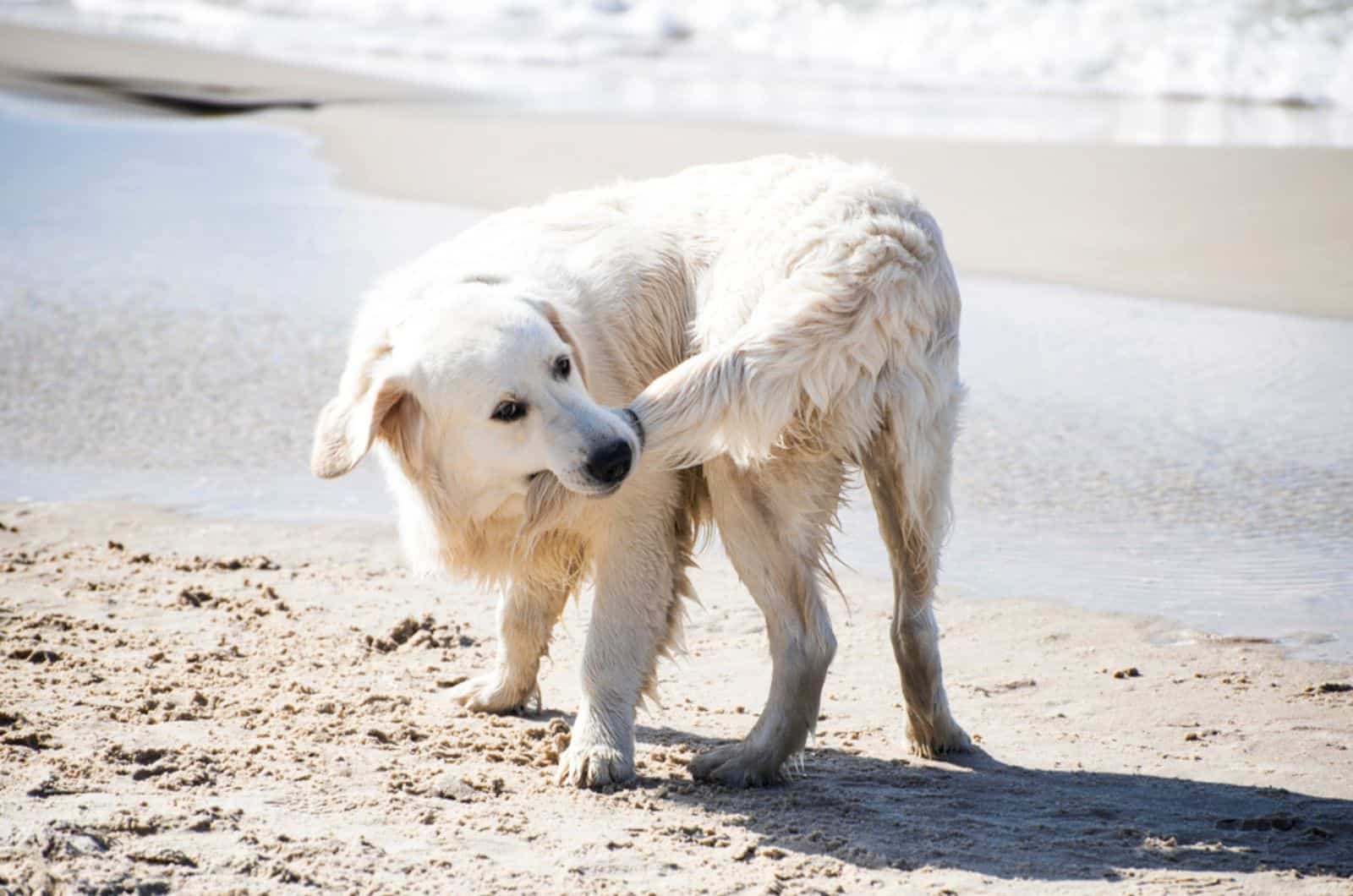One of the most stereotypical dog behaviors is them going after their own tails in circles, as if not realizing what they’re doing which is why many pet parents ask the question of why does my dog chase his tail. Believe me, there are good reasons for it.
To answer the question of why dogs chase their own tails, it’s a number of different reasons, the most common one being a form of entertainment for the dog.
He’s simply creating his own fun much like we would if we had to figure out a way to kill time or to burn excess energy off.
Other causes could relate to a variety of medical issues, or it could just be pure genetics, though it can be a bit hard to tell without proper context.
That’s why I’m here today to tell you about all of the potential reasons behind this behavior and what accompanying issues you should be on the lookout for should you see your own pooch going after his own tail.
If you want to find out what these are and what you can do about them, be sure to read on.
Why Does My Dog Chase His Tail: The 5 Different Reasons
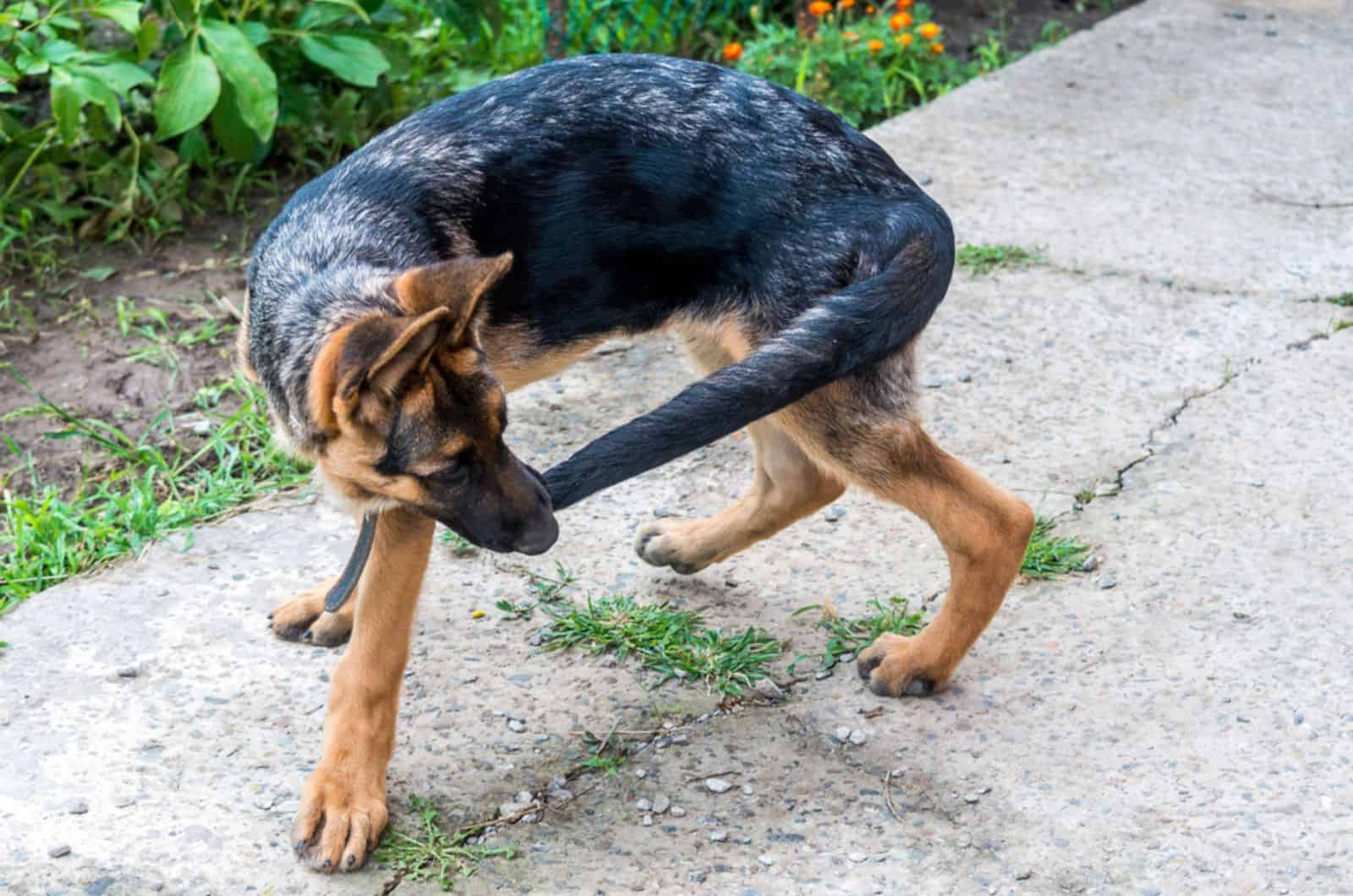
1. He’s Just Bored
As I’ve mentioned at the beginning, your dog may just be really bored and is trying to create his own fun.
This normally happens if you’re not around or not willing to play with him or aren’t giving him enough attention to satisfy his needs.
Don’t worry though, even if you do provide him with all the love you can, your dog will eventually just want to go for a change of pace and may end up chasing his own tail regardless.
Think of it as a skill test of some kind for him to see if he could be quick enough to get his own tail.
Plus, it’s often quite entertaining to watch and not harmful in the slightest.
2. Lack Of Object Permanence
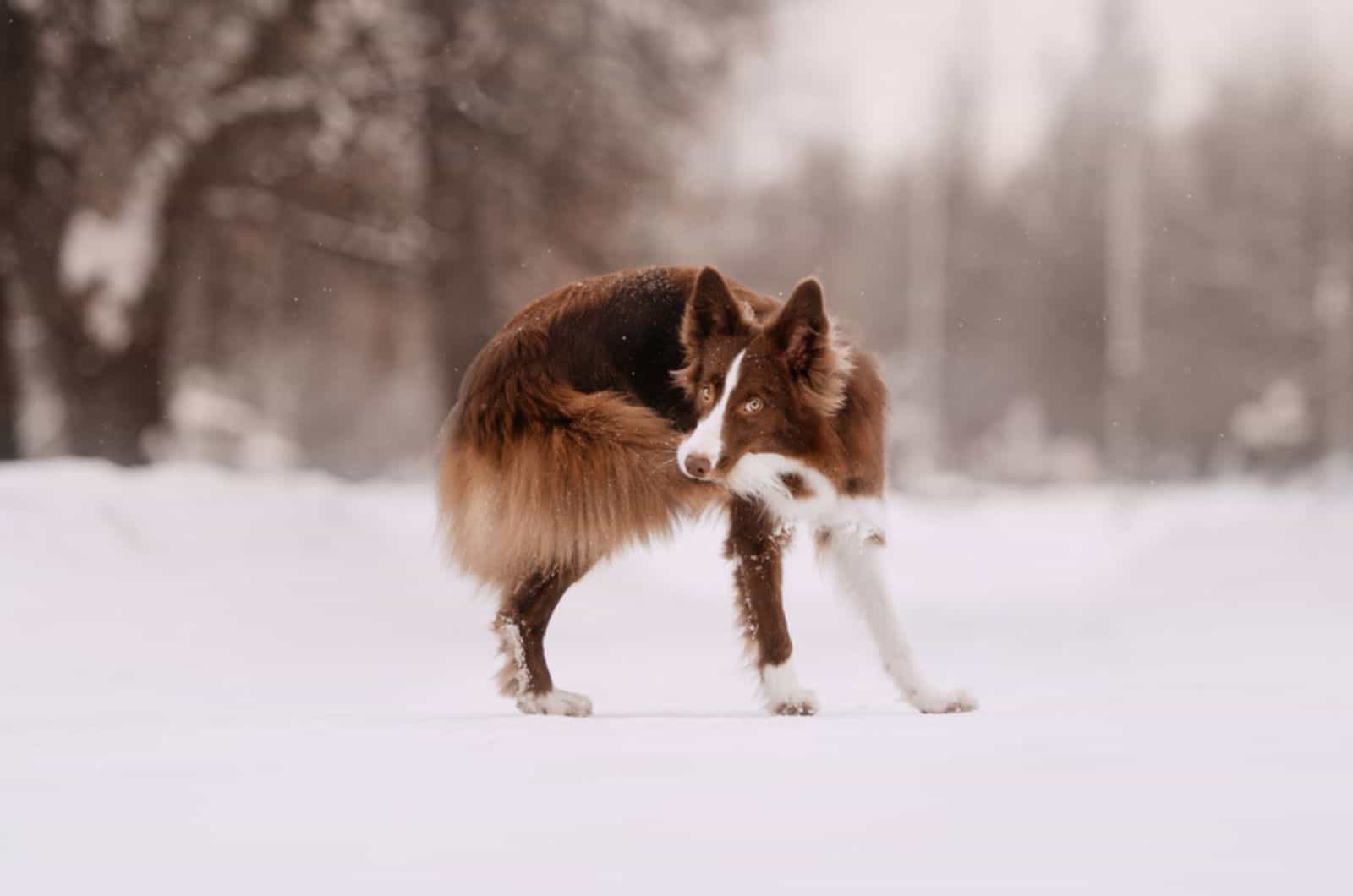
Following up on the first reason, puppies often chase their own tails because they’re still not aware that it’s their own tail and believe it to be another dog, one that keeps evading them at every corner.
They find the act of trying to chase after it absolutely entertaining in every way and can go at it for quite a long time as they don’t get dizzy like we do if we spun around in circles for that long.
Just be careful of when they actually catch it so they don’t hurt themselves.
3. It Could Be A Genetic Thing
Going into the more medical side of things, some dogs chase after their tails due to higher levels of cholesterol.
While the correlation between the two is yet unknown, it does seem to be tied in some way between most dogs who are predisposed to have high cholesterol levels.
There’s also the fact that it’s a form of compulsive behavior in some dogs, once again tied to specific genetic makeup which can be a concern in some cases if it becomes too distracting for the dog or the behavior turns too destructive.
Be sure to keep a close eye on your canine companion on how often he does this behavior daily or weekly and whether it occurs even if you’ve given him plenty of physical exercise and mental stimulation for the day.
If it seems to be happening constantly with none of your efforts to try and stifle the behavior seemingly working, then I advise that you take him to a vet for a check-up and consultation on what further steps you can take to hopefully curb said behavior.
4. It’s Related To A Health Issue
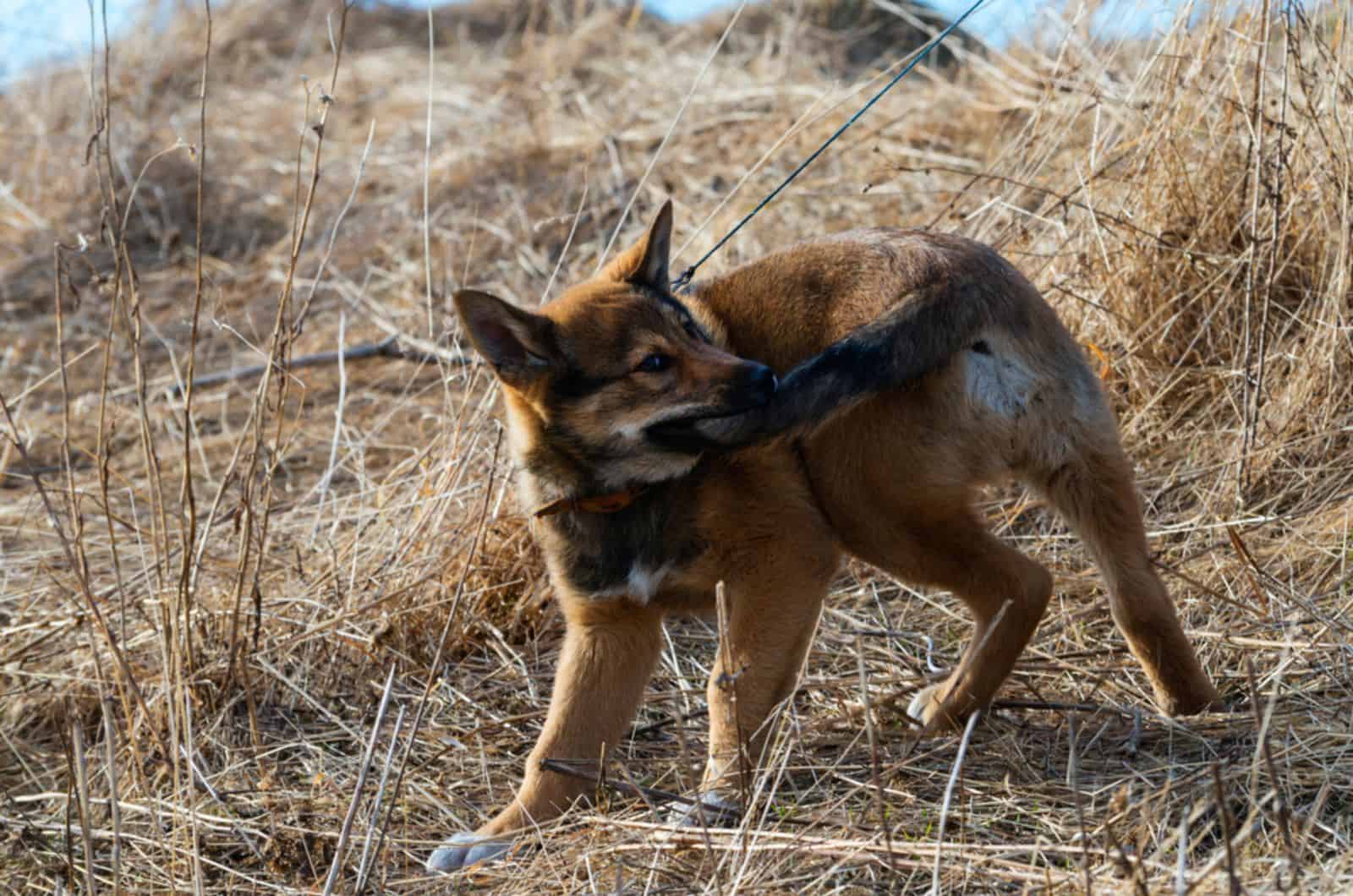
Another thing that it could be is a sign that your doggo may be suffering from some medical condition that should be looked into.
One of the more commonly related reasons in this case tends to be due to some ghost pains in dogs with docked tails.
A tail injury in general from excessive wagging or similar could also be the culprit in which case you’ll need to look the tail over carefully for any particularly painful spots.
Tied to the prior reason, it could be an early sign of a developing canine compulsive disorder which should be looked into.
Another potential cause could be a forewarning of developing epilepsy in your canine companion.
While it does sound like the two aren’t correlated, the brain abnormality that normally evolves into epileptic attacks is known to often cause tail chasing behavior.
This only further reinforces the need to look into the actual cause by taking a visit to the vet in case something can be done to slow the progression of such a serious condition.
A skin infection on the tail is another obvious reason, one that’ll be easier to notice than a few of the other ones on the list depending on what type of infection it is, though it’s certainly one that’ll cause your doggo some form of discomfort in the form of horrible itchiness.
This one is easily solved through the use of ointments and medicated shampoos, though you may need to put a cone on your dog in the meantime so he doesn’t lick any of the ointment off.
Finally, some forms of cancer are tied to this behavior, and it can serve as an early warning sign that something is wrong, once again showing the importance of going to a vet for a diagnosis.
5. A Parasitic Infection
The final cause could be something that can fit under the umbrella of a health issue, but I figured it needed its own category given the more physical cause of the problem, parasites.
While not as dangerous as internal parasites, the external ones can be an even bigger annoyance, the ticks and fleas in particular.
Not only will it be severely itchy for them, but you may note them trying to chew on one particular area of the tail. If that’s the case, make sure to check for the two potential pests.
If your pupper does indeed seem to be affected by them, phone up the dog’s vet to ask about the next steps in handling the situation.
The answer will usually be some form of topical ointment or medicated shampoo, a similar treatment to any form of rash, though these will be more specialized in eliminating these little annoyances.
Once again, your dog may end up getting the cone to prevent him from licking any of the ointment up.
Is Tail Chasing A Bad Thing?
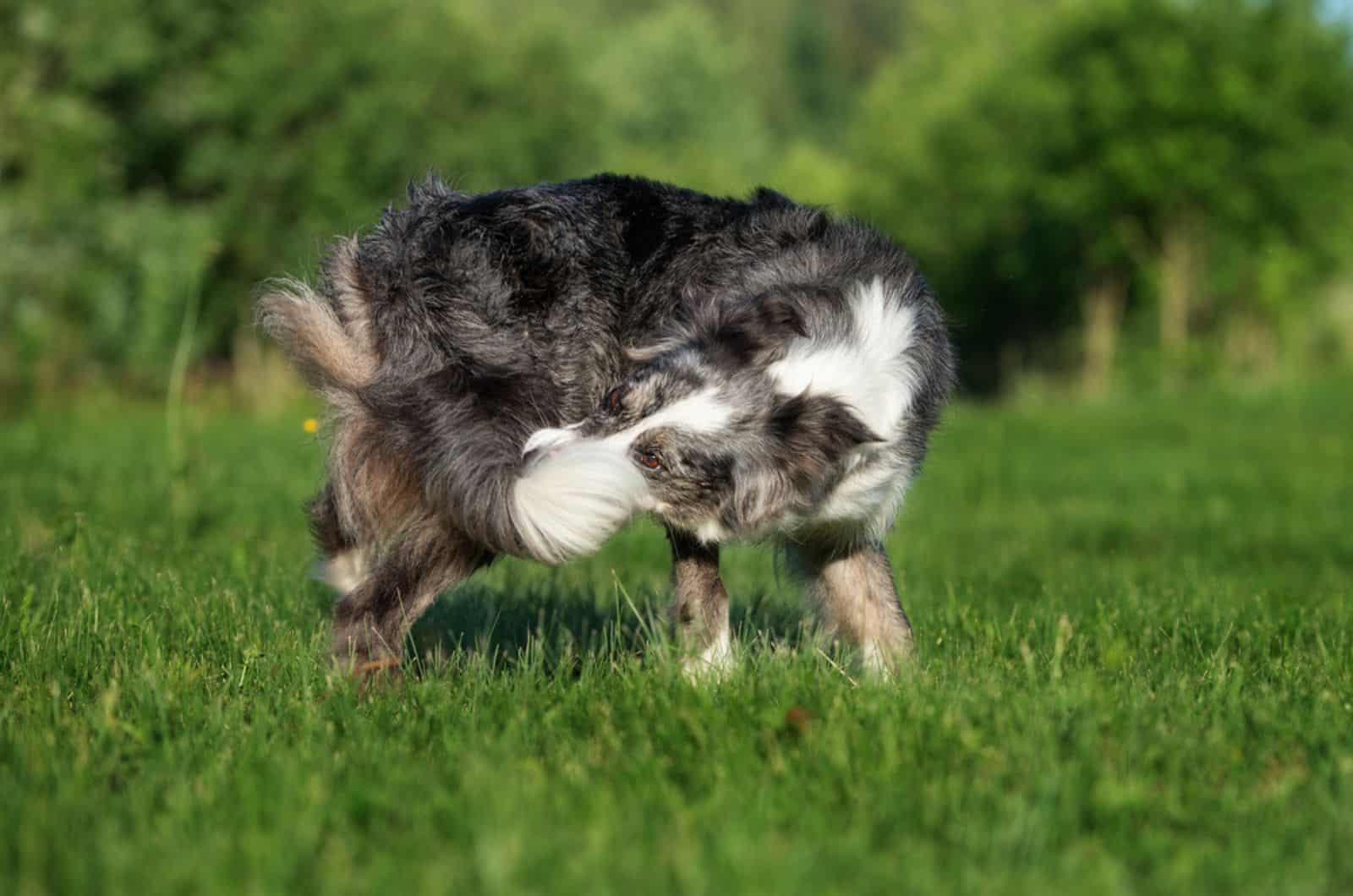
Tail chasing on its own? Not really. It’s a good way for the dog to distract himself more than anything, and, as you can see, it’s also a good indicator that something may be wrong with the dog, an early warning sign, if you will.
The main problem, however, is tail chewing or pulling.
Once the dog actually catches his tail and goes a bit too far in either of the two options, it can lead to an unnecessary injury which will then need to be remedied.
And that’s a problem since the tail is one of the dog’s main methods of communication.
So, do enjoy watching him go after his tail, but be on the ready in case you need to put a stop to it.
Is It Better To Allow It To Happen Or To Train Him Out Of Doing It Entirely?
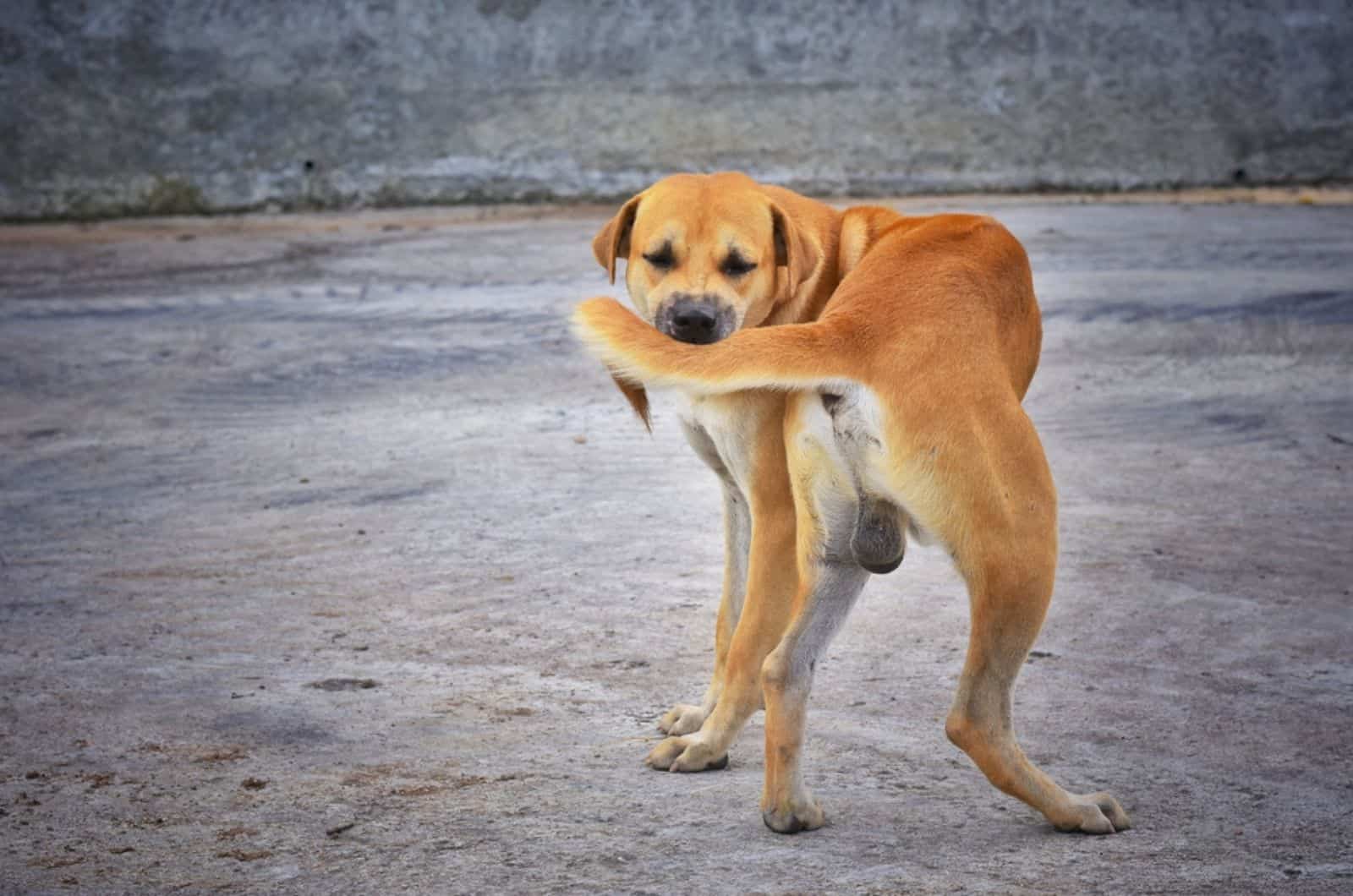
While there are positives to the tail chasing behavior, the negatives can be problematic too so it’s up to you to weigh the pros and cons of the situation.
That said, it’s better to be safe than sorry in this case so do try and discourage the behavior if you can. If not, ask a trainer for some advice on the matter.
Which Breeds Have A Genetic Predisposition To Chase Their Own Tails?
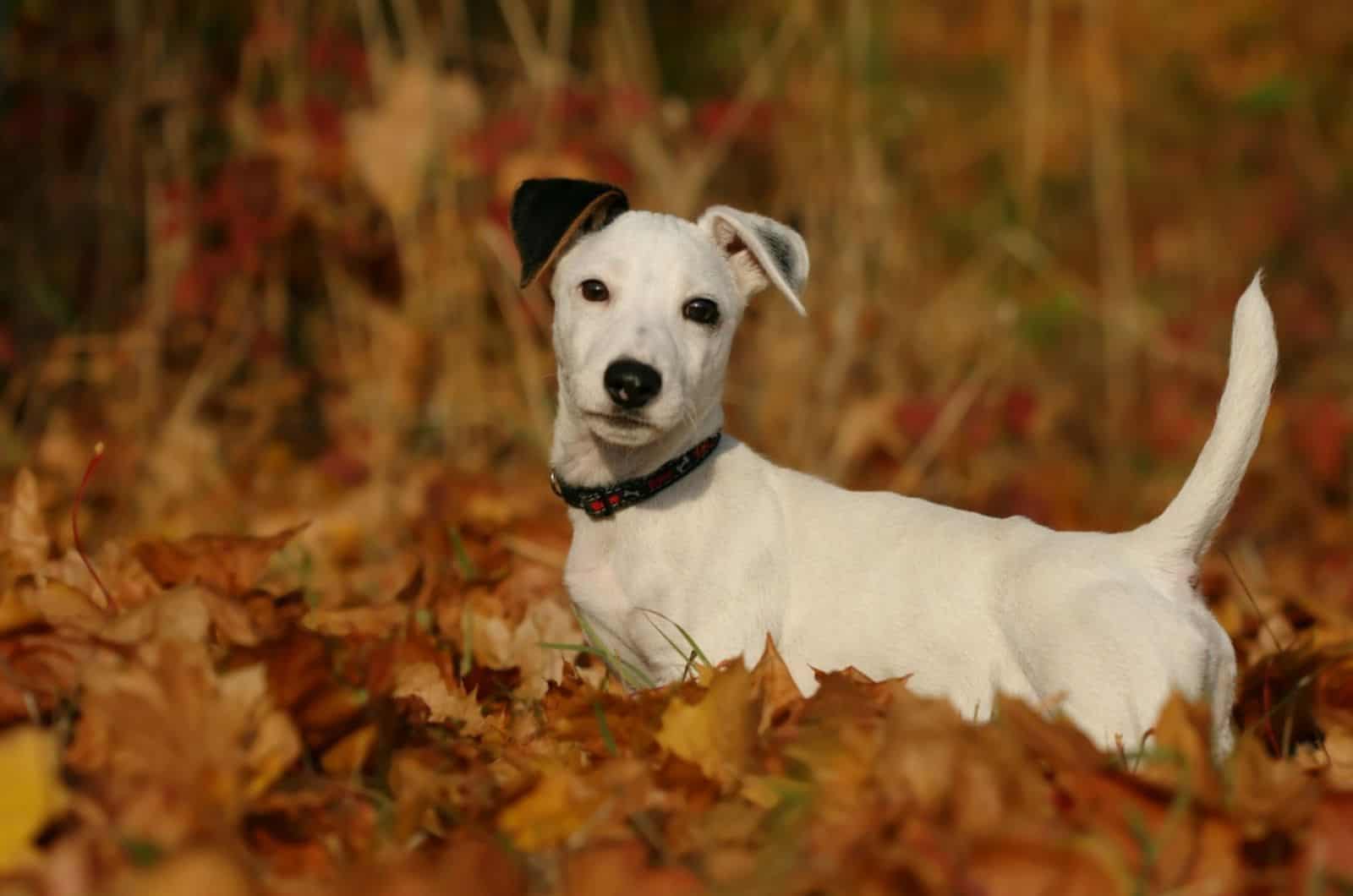
Normally, it’s the breeds who are also predisposed to some of the medical conditions listed above, or dogs who require a lot of mental stimulation.
The most common ones are, but aren’t limited to:
- German Shepherds
- Jack Russel Terriers
- Bull Terriers
- Anatolian Sheepdogs
Though, keep in mind that this trait is often a genetic thing, and that some representatives of these breeds may not develop such behavior, while some representatives of other breeds could become tail chasers too.
It’s estimated that around 30%[1] of dogs showcase tail chasing behavior.
In Conclusion
Many people ask themselves why does my dog chase his tail? But the answer isn’t always as complicated as some may believe.
The most common case is often related to boredom or to younger pups lacking object permanence making them run after the most animated thing in their sight range.
Other than that, it can be a thing tied to either genes or a particular medical condition as the dog tries to reach the tail to try and soothe some of the symptoms, often related to itchiness and the like.
Parasites in particular can make it a real pain to handle.
Thankfully, the solutions are always simple and rely on either utilizing some form of shampoo or ointment to get rid of the cause, or simply by engaging with the pooch.
Whatever the case may be, your vet will know exactly what needs to be done, so it’s best to rely on him to get a more concrete answer on what’s causing this behavior and what method needs to be used to remedy it.
And, while tail chasing may be fun to watch, it is ultimately dangerous, so utilize some behavioral training and try to discourage the behavior as quickly as you can before your darling doggo ends up hurting himself.
Until next time, pet parents.
RELATED LINKS:
- Why Do Dogs Wag Their Tails – Tail Positions Explained
- 5 Wag-nificent German Shepherd Tail Types
- Happy Tail Syndrome: What Is It And Should You Be Concerned?
References:
[1] Charlotte C. B., Peter H. (2011), A Vicious Cycle: A Cross-Sectional Study of Canine Tail-Chasing and Human Responses to It, DOI
